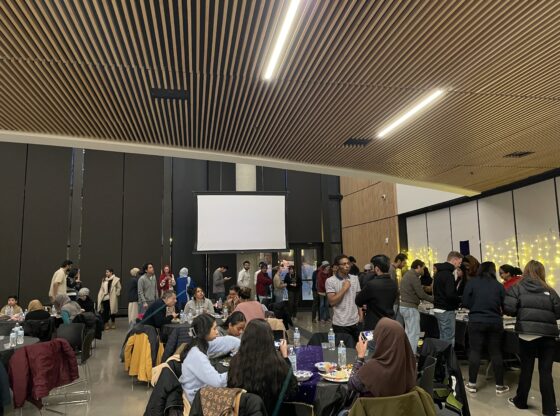The month of February is dedicated to honoring the history of African Americans to in the United States. With celebrations occurring all across the country, the University of Denver’s campus has come alive with festivities to recognize the African American population on campus. With events led by the Black Community Initiatives (BCI), the Cultural Center, the Black Student Alliance (BSA) and African Student Union (ASU).
Black History Month was originally celebrated for only a week before turning into a month-long celebration in 1976. February was chosen as it is the birth month of both Frederick Douglass and Abraham Lincoln. Every year, a new theme is selected to showcase the various contributions made by the community. This year’s Black History Month theme is African Americans and the Arts. Intended to show the way that African American visual and performative art is infused with their lived experiences.
Black Art was brought to the international stage following the Black Renaissance and New Negro Movement around a century ago in the 1920s and 30s. The Black Arts Movement in the 60s brought a different perspective in art, where artists exhibited their cultural pride in their pieces, which were displayed in museums and galleries. In the 70s, hip-hop, a new genre at the time, took over. Since then, the genre has continued to have a strong influence in different realms of society, like culture and politics.
In tune with this year’s theme, the Black Art Jubilee was one of the larger scale events celebrating Black History Month on campus. On Thursday, Feb. 15, the Cultural Center, BSA and ASU joined together to showcase the work of talented local Black artists, who were also DU students. There was a wide range of art on display including multimedia, paintings, graphic design, jewelry, poetry and writing.
African Student Union president, Kutlo Mmereki, a fourth-year majoring in marketing, shared the significance of the event, especially at a place like DU, a predominantly white institution (PWI), where diversity is often lacking.
“[The Black Art Jubilee is] meant to show multimedia from a Black perspective. We have a Black film crew in the back showing off their new film that they’re creating. Then in the corner, we have Ghanaian waist beads that you can make that are authentic to Ghana and are how you would make them back home. Then we also have an artist showing the beauty of the African diaspora, which means the beauty of all Africans and Black people across the continent,” said Mmereki. “The art is meant to show you that as Black artists, we have a voice and there are ways to show it that are unique to us alone because of our experiences as Black people.”
The event was an accumulation of months of relentless planning between the different organizations. Black Student Alliance president, Sophia Holt, a third-year majoring in film and English, shared what the essence of the event was.
“Diversity in thought and in creation. Again, I’m talking about art and how it’s encompassing a lot of different things. And a lot of times, those things are [not adequately] represented. As much as they are represented in the media, they are very white, capitalistic and hetero. I think any chance you get to expand your taste in those things and refine your taste in the arts is cool. Even people who aren’t people of color that come to these events, it’s an exciting chance. Enrich your life,” said Holt.
Kereine Malemba, a second-year graduate student in international development, was one of the artists exhibiting their work. Malemba seldom shares her work with others and considers it “something to do at home.” Her work emphasizes the unique artistic perspective of African culture and her cultural pride is prevalent in each of her pieces.

“Most of my art is African-based. I have more African characters and I paint more African art. I’ve traveled to a lot of places. I studied abroad in Spain and all I saw was European art and I think that being from Gabon in Central Africa is something special in being able to show other people, Black people, African people, in art where they’re often not represented,” said Malemba.
“The most important thing for me is to show up in solidarity for Black History Month and the significance of the intersection of our history. Being the ASU president, I recognize that we have this sense of privilege of understanding our own culture and how can we create a space and conversations to let different Black people and people with different identities have a space to explore our culture as well as their own that they have lost,” said Mmereki. “I think it’s important that as a Black Community on DU’s campus that we are unified and we stand in solidarity with one another.”
While Black History Month serves as a jubilant occasion to honor the invaluable contributions of the African American community to U.S. history and culture, it also serves as a moment for introspection, acknowledging the ongoing challenges and injustices they confront. Despite strides forward, the persistent racial violence, discrimination and an unjust criminal justice system continue to cast shadows over the lives of African Americans.
Celebrations have been ongoing throughout the entire month. To keep up with future events, check out BSA, ASU and BCI’s Instagram pages and their crimson connect.










